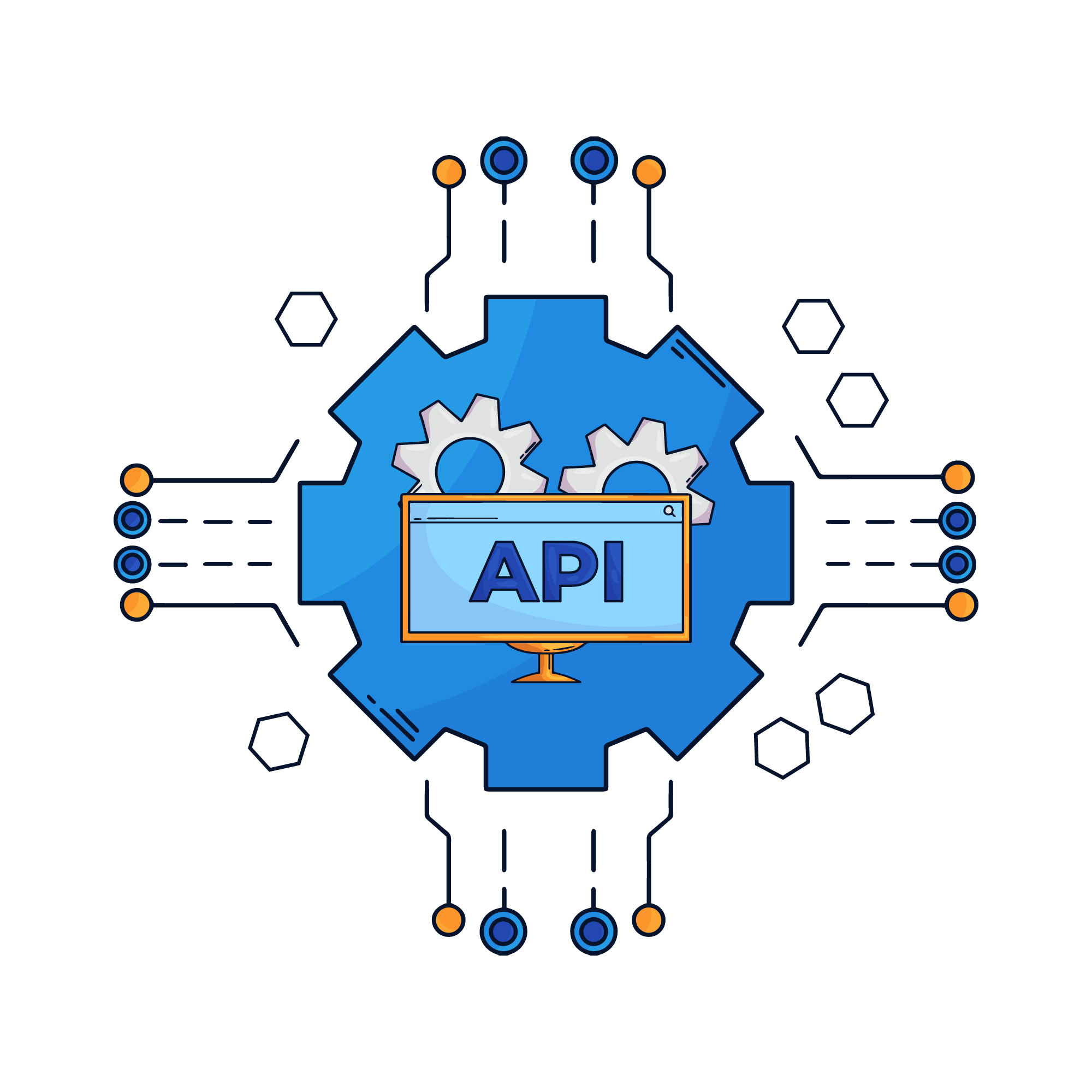Heading: The Rise of API-Based Threats: A Comprehensive Guide to Protecting Modern Applications

In the digital world, Application Programming Interfaces, or APIs, are the silent workhorses that power almost every modern application we use. From mobile banking to social media feeds and IoT devices, APIs enable seamless communication between different software systems. However, this same connectivity has created a massive new attack surface for cybercriminals.
APIs have become frequent targets of attack, leading to significant data breaches and financial losses. According to recent studies, API-related breaches have surged by nearly 40% over the past year, with each incident costing companies an average of $2.5 million in losses. Just last year, a global corporation faced a catastrophic breach when cybercriminals exploited an unsecured API endpoint, stealing sensitive customer data and costing the company millions in fines and reputation damage. This guide examines why APIs are a prime target, identifies the most common vulnerabilities, and provides proactive strategies for building resilient enterprise cyber defenses.
The API-Driven World: Why the Attack Surface is Expanding

APIs are no longer just a technical detail; they are the foundation of digital business. A recent Imperva report found that API traffic now constitutes over 71% of all internet traffic. As organizations adopt microservices, cloud-native architectures, and mobile-first strategies, they are creating more APIs than ever before. This rapid proliferation, however, has outpaced the security measures designed to protect them. The result is a landscape riddled with cybersecurity threats that traditional web application firewalls (WAFs) and network security solutions are ill-equipped to handle.
Unlike a traditional website attack, which might target a single login page, an API attack can bypass front-end protections entirely and go for the data. An attacker can exploit a poorly secured endpoint and access millions of user records, manipulate business logic, or trigger a distributed denial-of-service (DDoS) attack. This makes API security a board-level risk needing immediate attention. A notable example is the 2018 Facebook breach, where attackers exploited an API vulnerability, affecting nearly 50 million accounts. Similarly, in 2020, T-Mobile suffered a data breach through an API vulnerability that exposed customer details. Such incidents highlight the severe repercussions, where a breach impacting one million customer records could result in an average cost of $150 per record in fines, legal fees, and reputational damage, leading to a potential financial impact of $150 million. Moreover, the likelihood of an API-related breach is increasing, with reports indicating as much as a 30% annual chance, underscoring the urgency for diligent API security measures.
H3 Heading: The Threat of Shadow and Zombie APIs

One of the most insidious API security threats is the existence of "shadow" and "zombie" APIs.
- Shadow APIs: These are undocumented, unmonitored APIs that were created by a development team for a specific purpose but were never formally registered or secured by the IT department. They exist in the shadows, unknown to security teams, making them an easy entry point for attackers.
- Zombie APIs: These are deprecated or outdated API versions that are no longer actively in use but were never properly decommissioned. An attacker can find an old, vulnerable version of an API and use it to access sensitive data, even if the new version is perfectly secure.
Without a robust API discovery and inventory process, organizations are flying blind, leaving themselves open to these hidden vulnerabilities. To effectively tackle shadow and zombie APIs, firms should utilize specialized discovery tools such as API management platforms that offer automated discovery features. Tools like RapidAPI and Postman provide visibility into active APIs and help maintain an up-to-date inventory. Additionally, implementing regular audits and using network scanning tools can identify unauthorized or outdated APIs, ensuring comprehensive protection against these elusive threats.
Dissecting the Most Common API Vulnerabilities: The OWASP API Security Top 10

To understand how to protect your systems, you must first know what you're up against. The OWASP (Open Web Application Security Project) API Security Top 10 provides a definitive list of the most critical risks to API security. By addressing these, you can significantly strengthen your cybersecurity posture and achieve effective data breach prevention.
- Broken Object Level Authorization (BOLA): This is the number one threat and the most common cause of major data breaches. It occurs when an API allows a user to access an object (like a file or a user record) they shouldn't have access to by simply changing a single number in the API request (e.g., changing user_id=123 to user_id=456).
- Broken User Authentication: This vulnerability arises from weak or improperly implemented authentication mechanisms. Attackers can exploit this to perform credential stuffing, brute-force attacks, or steal API keys and session tokens, impersonating legitimate users.
- Excessive Data Exposure: When an API returns more data than the client needs, it's a critical flaw. For example, a request for a user's profile might unintentionally include their social security number or credit card details in the response, even if the mobile app only needs their name and photo.
- Lack of Resource & Rate Limiting: Without limits on how many requests a user can make, attackers can overwhelm the API with requests, leading to a distributed denial-of-service (DDoS) attack or enabling them to brute-force a password in minutes.
- Broken Function Level Authorization: This is when a regular user can access and execute administrative functions within an API that should be restricted to privileged users. For instance, a basic user could potentially trigger a function to delete another user's account.
These are just a few of the critical risks that organizations must proactively manage. Embracing a proactive approach can significantly reduce breach detection and containment costs, which are often staggeringly high in reactive scenarios. Drawing from industry findings, downtime, data loss, and reputational damage accumulate rapidly when organizations respond reactively, leading to increased rework and longer recovery periods. Conversely, a proactive strategy, integrating security from the outset, ensures vulnerabilities are addressed before they can be exploited, dramatically reducing these overall costs. According to a recent study by CyberEdge Group, organizations that implemented proactive API security measures reduced their breach detection time by 35% and response time by 40%, ultimately saving an average of $1.3 million annually in potential breach-related costs. The key to mitigating these risks lies in shifting from reactive to proactive cyber defense strategies.
Essential Strategies for a Robust API Cyber Defense

Securing APIs requires a multi-layered approach integrated throughout the software development lifecycle. Simply adding a firewall is no longer enough. Here are best practices for building a robust API protection framework.
Proactive Security at the Foundation
A secure API begins at the design stage. Instead of treating security as an afterthought, it must be "shifted left" into the development pipeline.
- Adopt a Zero Trust Model: Assume no user or device is trustworthy by default. Every API request must be authenticated, authorized, and validated, regardless of its origin. This principle is a cornerstone of modern information security.
- Implement Strong Authentication and Authorization: Use modern standards like OAuth 2.0 and OpenID Connect, and enforce multi-factor authentication (MFA) for all sensitive APIs. Ensure that authorization is granular, allowing users only the minimum permissions necessary to perform their tasks.
- Validate All Input: Treat all incoming data as potentially malicious. Implement strict input validation on the server side to ensure data conforms to a predefined format, preventing injection attacks like SQL Injection and Cross-Site Scripting (XSS).
The Role of Technology in API Protection

Technology plays a crucial role in automating and enforcing your security policies.
- API Gateways: An API gateway acts as a central entry point for all API traffic. It can enforce security policies, perform rate limiting, manage authentication, and provide a single point of visibility for all API interactions. This is a critical component of any comprehensive network security architecture.
- Web Application and API Protection (WAAP): Modern WAAP solutions are designed specifically to protect against both traditional web attacks and the unique threats targeting APIs. These platforms can perform advanced behavioral analysis to detect and block malicious bots, business logic abuse, and other sophisticated attacks.
- Continuous Monitoring and Threat Detection: You cannot protect what you cannot see. Continuous monitoring of API traffic is essential for identifying anomalies and suspicious behavior in real-time. This is a key part of threat detection and response. By analyzing logs and API behavior, you can spot the subtle signs of an attack and respond before a major data breach occurs.
The Future of API Security: AI and Beyond

The cybersecurity landscape is constantly evolving. As cybercriminals leverage AI and automation, so too must our defenses. The next generation of cloud security solutions will incorporate machine learning to better understand "normal" API behavior and detect sophisticated threats that mimic legitimate user traffic. Among these AI-driven strategies, anomaly clustering stands out as a powerful tool to quickly identify unusual patterns in API traffic, enabling faster threat detection and response. Additionally, the use of synthetic user generation for testing can simulate potential attack vectors and assess the resilience of your APIs, providing actionable insights into strengthening security measures within a 12-month roadmap.
To begin integrating these AI-driven security enhancements, organizations should consider launching pilot projects to test the capabilities and feasibility of these technologies in their environments. The initial phase can include vendor selection, focusing on solutions providing robust AI features tailored for API security. Evaluating different vendors through pilot evaluations provides hands-on experience and helps identify the best fit for your needs. This step-by-step approach facilitates informed decision-making and smooth implementation of AI-driven security measures.
Furthermore, the rise of Generative AI introduces new risks and new defenses. AI-driven threats like prompt injection and data exfiltration from Large Language Models (LLMs) are becoming more common, but AI can also be used to automate API security testing, enabling organizations to find vulnerabilities faster than ever before. This continuous cycle of innovation and adaptation is key to staying ahead.
Case Studies in Prevention: From Theory to Practice
- Financial Services: A major fintech company used to rely on basic API keys. After a series of bot attacks, they implemented a robust WAAP solution with granular rate limiting and behavioral analytics. This not only stopped the attacks but also reduced their infrastructure costs by blocking unwanted bot traffic.
- E-commerce: A global retail brand discovered a broken object-level authorization vulnerability in its mobile app's API. A quick fix was deployed, but to prevent future incidents, they integrated an automated security testing tool into their CI/CD pipeline, ensuring every new API release is scanned for common vulnerabilities.
These examples highlight that a strong API security strategy isn't just about avoiding a negative outcome; it's about building a more resilient, trustworthy, and efficient business.
Conclusion: Securing Your Digital Future
The rise of API-based threats is a direct consequence of our increasing reliance on connected, modern applications. Ignoring this new attack surface is a high-stakes gamble that no organization can afford to take. By adopting a proactive, multi-layered approach that combines best practices, advanced cloud security solutions, and continuous vigilance, you can build a formidable enterprise cyber defense that protects your most valuable assets: your data and your customers' trust. As you fortify your digital defenses, envision a future where your customers' trust is not only regained but strengthened, leading to enhanced reputational capital and business resilience. In this secure future, your organization not only mitigates risks but also thrives on the trust and confidence of its stakeholders.
Next Step: Ready to Secure Your APIs?
Is your organization's API infrastructure truly secure? Our team of cybersecurity experts specializes in API security audits and comprehensive threat detection and response strategies.
Contact us for a consultation to assess your API vulnerabilities, implement cutting-edge security solutions, and ensure your business is protected against the most sophisticated cyber threats.
Build Your Next AI-Powered P2P Platform with Us
Ready to connect users directly, securely, and with unmatched efficiency? We specialize in developing AI-powered peer-to-peer (P2P) platforms—websites, applications, and dashboards—built around your business objectives and user needs.
What you gain with our expertise:
- Secure & Scalable – Protect data and grow with ease
- Secure & Scalable – Protect data and grow with ease
- Real-Time Interaction – Smooth communication & instant transactions
- Custom Solutions – Built for your industry and audience
From secure file sharing and decentralized communication to real-time analytics, we deliver AI-powered P2P solutions that empower users, reduce costs, and accelerate business growth.
Let’s build smarter together. Contact us today and discover how we can bring your intelligent P2P platform to life.
#P2PDevelopment #AI #CustomSoftware #SecureApps #BusinessSolutions #PeerToPeer #DecentralizedApps #TechForBusiness #DashboardDesign #AppDevelopment
